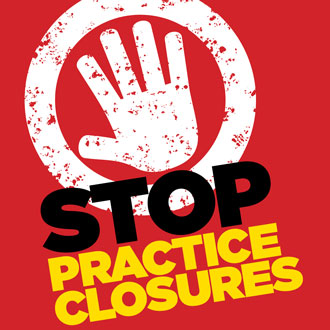NHS England accused of allowing small and single-handed practices to fail

Exclusive Local area teams are routinely failing to preserve distressed practices if they have fewer than 4,000 patients, local leaders have claimed.
Londonwide LMCs has said that a lack of capacity and expertise since NHS England took over from PCTs has meant contracts for small practices are only renewed in ‘exceptional’ circumstances, and typically the practice list is dispersed.
Figures obtained by Pulse reveal that eight practices with list sizes of fewer that 4,500 patients have closed since February 2014 – comprising at least 75% of all closures in the capital, but likely more.
The LMC told Pulse that because of ambitions to have general practices working at scale, small practices were under the microscope.
NHS England London area team denied that they had a policy on preferentially dispersing the lists of small practices, saying that each case was reviewed on its ‘own merits’ and that there was no ‘formula’ for practices to have their lists dispersed.
Pulse has been campaiging for NHS England to pledge support to practices under threat of closure as part of its Stop Practice Closures campaign, after finding scores of practices on the brink of shutting.
But Dr Tony Grewal, medical director at Londonwide LMCs told Pulse: ‘We have heard in conversations with them, in open meetings, that they would not normally go to procurement for a list of less than 4,000 unless there were very special circumstances.
‘I have not seen, and am not aware that there is a formal, written policy on this. But certainly in terms of actions, that has been the case with every closure I’ve come across in a small practice.’
The LMC said there had been eight closures of small practices in the past 12 months, including:
- Two Westminster practices – 3,500 and 2,500 patient list size
- South London – 2,000 patient list size
- City & Hackney – 2,250 patient list size
- Harrow – 3,300 patient list size
- Camden – 3,600 patient list size
- Islington – 4,000 patient list size
- Waltham Forest – 4,500 patient list size
Although there are no figures about how many practices closed overall in this time period, information obtained by Pulse from NHS England under the Freedom of Information Act revealed that six practices overall closed between April 2014 and December 2014, plus six between April 2013 and March 2014.
Londonwide LMC added that these dispersals were occurring without any management from NHS England, heaping pressure on stretched neighbouring practices and disadvantaging both patients who had to reregister and the existing practice population.
Related stories
Stop Practice Closures campaign
One in ten practices in some areas ‘face closure’
More practices could be set for MPIG support due to potential miscalculations
Dr Grewal added: ‘[Since PCT days] in terms of efficiency and the capacity to deliver a wider range of services, and lots of other reasons, small and single-handed practices are under the cosh, or at least under the microscope and then under the cosh.’
‘The dispersals are not even managed, it’s quite simply, patients are informed their practice is closing and they’re given a list of other practices within this area near where they live falls, and told to go along and register.
Dr Grewal told Pulse the LMC was in discussions with NHS England about formalising processes in future, he said: ‘One of the things we are trying to do with NHS England, is to actually set up a proper policy for what happens when a practice may be at risk of closure, and also what happens when a practice closes as a matter urgency – as also happens.
‘If you go back to the days of PCTs, the individuals there actually had the expertise and the experience to understand all of the ramifications of a practice closure. Unfortunately, that is not necessarily the case in NHS England as it is at the moment.’
A spokesperson for NHS England London told Pulse: ‘When NHS England is made aware by a contractor that a contract is to be terminated our priority is to ensure patients continue to receive a consistent, high quality service, whether it is at their current surgery under a different provider or at a nearby practice.
‘A robust process is in place, which includes engagement with patients, the representative body for GPs, the local CCG and colleagues in the local authority to help inform our decision on next steps. There is no formula which NHS England applies as each case is determined on its individual merit.’
They added: ‘List size is one of the considerations. We’re also mindful of availability and suitability of premises, practice capacity and capability in the area of the vacancy generally, the geographic spread of the patients of the vacant practice, the health needs of the area and of course the views of patients, LMC, CCG and local authority colleagues.’









